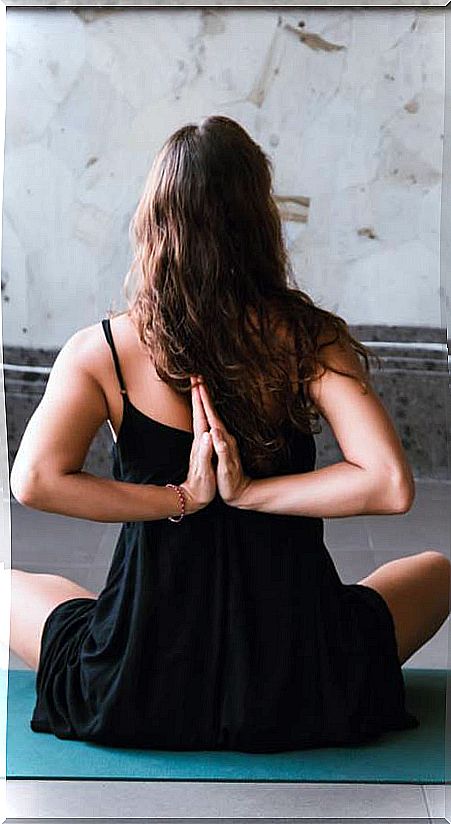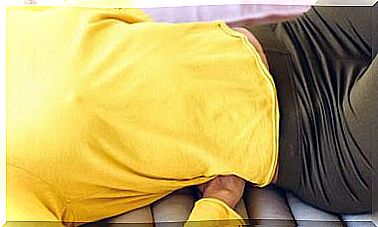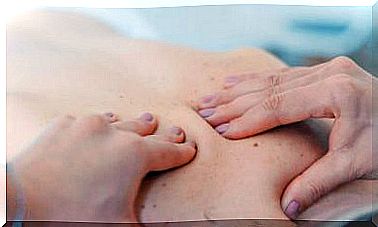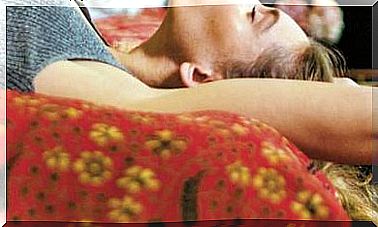10 Techniques To Relax In A Stressful World
Human beings have an innate ability to relax, but they do not always use it. The cause is a life immersed in action, competitiveness and continuous stress.

Far from being an objective accessible only during the holidays, relaxation should become a daily habit to enjoy health and a peaceful life. In difficult moments fear and stress take over our lives, pushing us to improve and reinvent ourselves.
Between the daily tasks we need time for ourselves that allows us to relax, take breath and distance ourselves from conflicts and pressures. But we are not referring to a vacation oasis once or twice a year, but to a way of life that facilitates daily rest, that helps to redirect difficult situations and, above all, that teaches us to manage stress consciously and positively.
Choose the most suitable relaxation technique for you
The different mind-body techniques that we propose have the virtue of acting at different levels:
- They favor a deeper breathing, capable of balancing all our vital centers and eliminating the toxic effects of continuous stress.
- They help to identify which are the muscles in which the tension is reflected.
- They allow us to gain more body energy to feel strong.
- They allow us to go inside ourselves to calm the mental noise that prevents us from seeing the correct route clearly.
1. Serenity with yoga
Through different asanas or physical postures, this ancient discipline allows the physical body to be aligned and harmonized with the subtle body (emotional, mental and spiritual). When this integration is achieved, the cessation of mental fluctuations and also the release of afflictions are experienced.
Its name derives from the Sanskrit word yug (union), so it is much more than a resource to turn to when you have physical problems or are stressed. It is, above all, an advisable discipline to practice regularly in order to stay in balance, aware and without divisions between all aspects of our being.
As BKS Iyengar says in his book Light on Life : “If I tell you relax the brain, you cannot do it. But if I put you in a certain asana, the brain relaxes and you calm down. If you do Halasana (the plow pose) the Your brain becomes quiet even if you don’t know how that transformation took place. That is the beauty of yoga. “
The most effective postures to release tension are those that promote the opening of the chest:
- cobra ( Bhujangasana )
- the fish ( Matsyasana )
- the bridge ( Setu bandha Sarvangasana )
- any twist or inverted posture
Another asana that strengthens the sense of balance and the central nervous system, increasing mental clarity, is the mountain pose ( Tadasana ):
- We stand up, with the feet fully together, from the heels to the toes, and the legs fully stretched.
- We firm the glutes and flex the pelvis inward in order to form a straight line from crown to tailbone.
- We separate the hands from the body, thus forming a triangle whose vertex is the top of the head.
- We remain in that position for about ten minutes concentrating our attention on the stability it provides from the abdominal area and on a calm and regular breathing.
2. Tai Chi to harmonize posture
The word Tai Chi refers to the harmonization of the most essential energy, chi, or life force. It is a technique with slow and gentle exercises that are reminiscent of a moving meditation, ideal for taking away the rush, stretching and exercising the body, concentrating the mind on the present and developing a new sensitivity: that of attracting, moving and holding “spheres” of energy, which increases vital chi and teaches how to flow relaxed in the most diverse situations.
Practicing Tai Chi regularly allows us to stay connected with our interior and put stress aside.
3. Mindfulness: the power of now
Often we are not aware of what we are doing because our thoughts are occupied with other things. Mindfulness consists of intentionally paying attention only to the present and only to what we are doing in each moment.
Erich Fromm stated in his bookThe authentic life : “If I concentrate when I talk to someone, when I read, when I walk …, there is nothing more important than what I do here and now”. This mindfulness meditation can be practiced with everyday tasks.
Through this practice we stay in the present while putting aside the object of our stress and worries.
4. Full breathing
Breathing is the gateway to life and also the most immediate way to achieve serenity when everything seems to get out of hand. This process involves the entire body, but the diaphragm muscle plays a key role. By not being able to see or touch it, we tend to forget its ability to move and make it work according to its capabilities.
When we are stressed, breathing is fast, shallow, and does not oxygenate adequately neither the cells nor the brain. If it becomes slower and deeper, the heart rate decreases and the tension decreases.
To achieve this you have to surround yourself with a harmonious and calm space.
Through a conscious, full and deep breathing, focused on inspiration and expiration, it is possible to unblock thoughts and reduce tensions:
- We close our eyes and rest our hands on our stomachs.
- We take a deep breath through the nose imagining that the air enters and goes towards the head.
- We notice that the abdomen swells when lowering the diaphragm.
- We keep the inspiration for four seconds counting the time and then we gently expel the air through the mouth counting again for another four seconds, until we feel that the abdomen empties.
- We can accentuate expiration by contracting the abdominal muscles inward to force the air out.
5. Creative visualization
An effective practice, to try to improve a specific aspect of life, neutralize a negative state (restlessness, anxiety) or attract effective results is to use thought to create positive images that promote a favorable change on a physical or mental level.
This method called visualization does not consist so much in imagining as in creating realistic and evocative images with which to pave the way towards our vital goals, transforming negative thoughts into useful energy to access them. Because the brain does not distinguish much between what it actually sees and what it imagines, visualization builds well-being and confidence almost instantly.
Creative visualization uses thought to create positive images that promote positive change on a physical or mental level.
To practice this technique it is necessary to first place yourself in a state of deep relaxation in a comfortable position, closing your eyes with long and deep breathing cycles. Then:
- We create a clear image with all kinds of details of that ideal situation that we want to achieve: a more creative job, better cope with an illness, be less worried …
- With this visualization we imagine that we are on the other side of the obstacle: we have fulfilled the objective and we have accessed a new state.
- From that perspective, we experience the happiness that the resolved situation conveys in detail (sounds, smells …).
- We enjoy this feeling that it suggests to us and we calmly return to the present.
- Once the visualization is finished, we evoke this image daily, mentally expanding its details and specifying it as much as possible.
6. Autogenic training
Created by Johannes B. Schultz at the beginning of the 20th century, it is a form of intense and deep relaxation based on six mental exercises that relieve the effects of stress and release emotional and thought tensions.
Also inspired by self-hypnosis, through deep relaxation and the use of self-healing mechanisms a more serene physical and emotional state is achieved. The exercises are developed progressively.
They consist of body perceptions of weight (muscle strain), heat (vascular relaxation), pulsation (cardiac regulation), respiration (respiratory regulation), solar plexus (regulation of the abdominal organs), and head (cephalic regulation).
To practice them, you have to lie down with your eyes closed and mentally repeat each of the following sentences three times, trying to create images and perceptual sensations that reinforce what we are affirming:
- “My right arm weighed, my left arm weighed, both arms weighed, right leg weighed, left leg weighed, both legs weighed …”
- “My right arm is hot, my left is hot, both arms are hot, my right leg is hot, my left is hot, both legs are hot …”
- “My arms and legs are heavy.”
- “My heart rate is calm, my lungs breathe, my solar plexus is hot, my forehead is cold …”
These phrases should be alternated with another: “I’m calm.” Finish by taking a deep breath and opening your eyes.
7. Muscle relaxation
Physiotherapist Edmund Jacobson discovered in 1920 that muscle tension almost always hides a state of anxiety and that stress can be reduced by progressively tensing and relaxing the muscles.
Relaxation can change the perception of our surroundings, since all situations can be better valued from serenity.
It is a two-stage method, in which the muscles of different parts of the body are alternately tensed and relaxed:
- When you are relaxed, focus on your right foot.
- Tense your muscles by squeezing as hard as you can and counting to ten.
- The right foot is released and relaxed, watching it run out of strength.
- You stay relaxed, breathing slowly.
- The same is done with the left foot and this dynamic of tension relaxation is followed with the rest of the body.
8. Sophrology
It was created by Dr. Alfonso Caicedo in 1960, a Colombian doctor who lived in Madrid, a disciple of Professor López-Ibor. Alfonso Caicedo realized that for many of his patients learning to relax was as or more effective than some of the drugs he prescribed for their ailments. That prompted him to develop an effective relaxation technique.
Sophrology is applied today in the therapeutic fields (phobias, anxiety, stress …), pedagogical (help in learning techniques such as memory, self-control or knowledge of languages ) and also in the preventive field as a prophylactic measure.
“It is a useful technique to re-educate the emotions and to be able to anticipate situations that are yet to come and that could harm us in the future,” says Alberto García Álvarez, doctor and expert in sophrology. Sophrology uses daily mental training with exercises that include two levels of relaxation: simple, in which awareness of the body distension scheme is made, and dynamic relaxation divided into three degrees.
The first one, which can be done standing up, awakens the senses and activates all parts of the body with exercises similar to yoga, generating feelings of well-being. The second grade, inspired more by Buddhist techniques, also focuses on body perceptions. And the third is mainly based on meditation and intuition techniques.
9. Ayurvedic foot massage
The Padabhyanga has a great prestige in the Ayurvedic tradition for its health benefits. In India it is practiced as a daily ritual before going to bed to relax, prevent illness and boost defenses.
To stimulate the sense of touch and eliminate toxins with massage we can use sesame oil or almond oil mixed with a few drops of lavender essential oil, which facilitates calm.
Ayurvedic massage and self-massage is a simple and effective therapy. As the feet are a reflex zone, when we manipulate them we activate the rest of the body:
- We will rub in a circular direction the sole of all the fingers and we will stretch them.
- We will apply light pressure to each point of the sole of the foot.
- We will squeeze on both sides of the heel and massage the ankles.
- Finally, we will rub the instep of the foot and the calf.
10. Pranayama
One way to find stillness, escape stress, and reinforce vital energy is to practice yoga or pranayama breathing techniques. The anuloma viloma or alternate breathing is a pranayama technique used to calm the mind, very useful for coping with tense situations or relaxing before going to bed.









